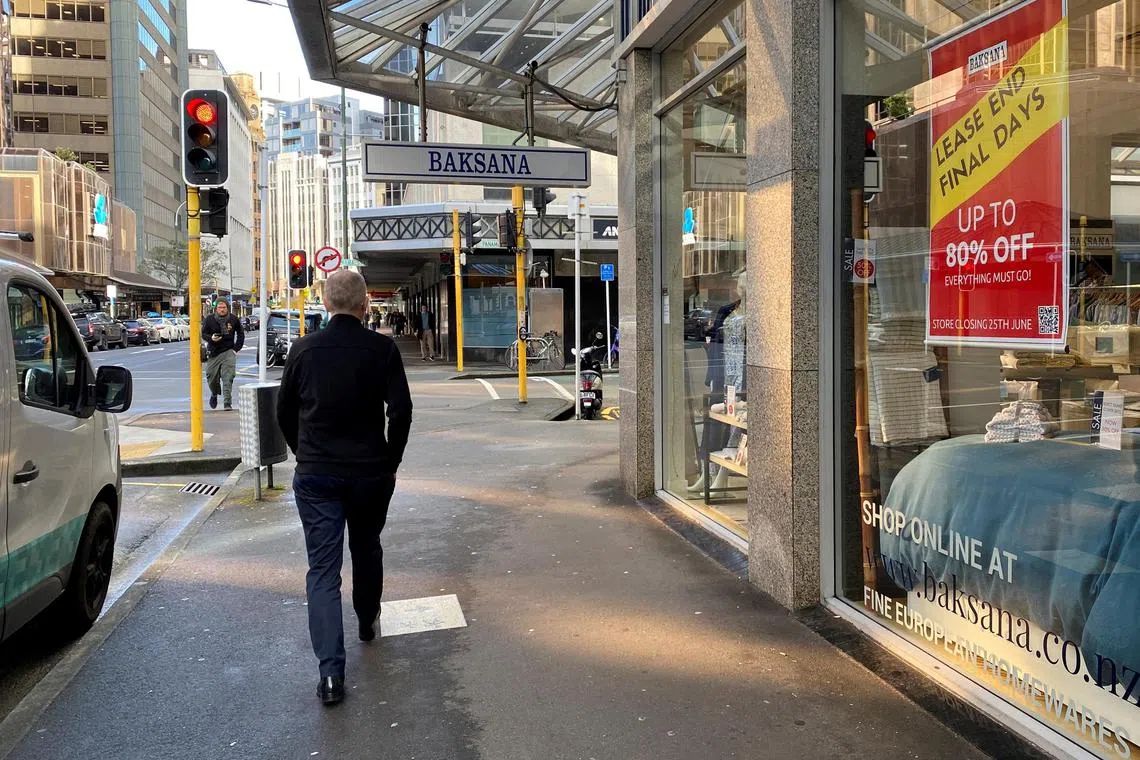New Zealand exits recession but economy remains weak amid steep borrowing costs
Sign up now: Get ST's newsletters delivered to your inbox

Strong immigration and tourism recovery are aiding New Zealand’s economy, but steep borrowing costs curb spending and investment.
PHOTO: REUTERS
Follow topic:
WELLINGTON – New Zealand’s economy exited recession with modest expansion in the first quarter.
Gross domestic product (GDP) gained 0.2 per cent from the previous quarter, when it declined 0.1 per cent, Statistics New Zealand said on June 20. Economists expected 0.1 per cent growth.
GDP rose 0.3 per cent from the year-earlier quarter, beating the 0.2 per cent estimate.
The economy is struggling as the Reserve Bank of New Zealand (RBNZ) keeps its key interest rate at 5.5 per cent, the highest since 2008, to bring inflation back under control. While strong immigration and a tourism recovery are aiding activity, steep borrowing costs are curbing consumer spending and business investment.
ASB senior economist Kim Mundy said that strong population growth continued to mask just how weak the New Zealand economy over the last 18 or so months has been.
GDP per capita shrank 0.3 per cent from the fourth quarter, its sixth straight quarterly decline.
“We expect growth to remain minimal over the course of this year,” said Mr Michael Gordon, senior economist at Westpac in Auckland. “Recent indicators suggest that the June quarter is shaping up to be quite soft.”
Despite the GDP result, which matched the RBNZ’s forecast, the economy has grown in only two of the past six quarters.
The central bank nevertheless signalled in May that it did not intend to lower rates until the second half of 2025, citing stubborn core inflation.
RBNZ chief economist Paul Conway said on June 19 that the economic slowdown caused by tight monetary policy is necessary to bring inflation back into the bank’s 1 per cent to 3 per cent target band, which it expects to happen later in 2024.
“We’re in a slow to negative growth environment but the outlook for growth is slightly more positive going forward and the outlook for inflation is for declines to continue,” he said. “We are experiencing some short-run pain. The idea is that the gain from low and stable inflation is going to be worth it.”
Most economists are tipping the first rate cut in the final months of 2024 or early 2025. Investors have fully priced in a 25 basis-point cut to the official cash rate by November, according to swaps data.
The main drivers of first-quarter growth were a lift in tourist spending and increases in dairy and forest output, the statistics agency said. Eight of 16 industries showed an increase in production. Manufacturing and construction declined. BLOOMBERG, REUTERS

